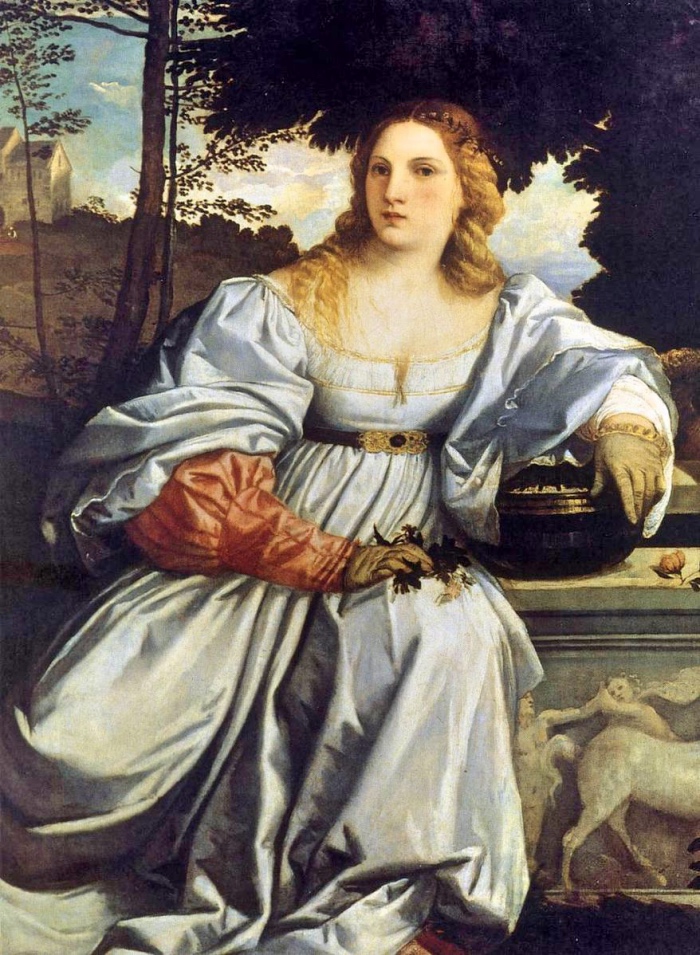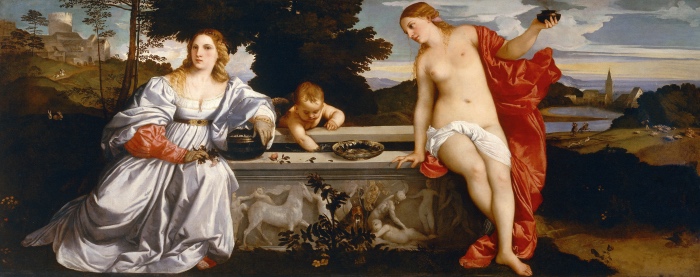Amor sacro e amor profano (sacred and profane love)

AMOR SACRO E AMOR PROFANO (SACRED AND PROFANE LOVE): TITIAN’S MYSTERIOUS PAINTING
Amor sacro e amor profano (Sacred and profane love). Titian was one of the most important Renaissance artists, and his works entered the most prestigious private and public art collections in the world.
Among them there was Cardinal Scipione Borghese’s art collection.
In 1608 he bought Titian’s most mysterious painting, known as Amor sacro e amor profano (Sacred and profane love).
In this post I will explain you why.

Amor sacro e amor profano (Sacred and profane love) is currently housed in the Galleria Borghese in Rome, and several hypotheses about its meaning have been made.
According to the most realistic and plausible hypothesis, the painting is an allegory of two kinds of love: vulgar love represented by the naked woman, and celestial love represented by the clothed woman.
The two women are sitting on a fountain, which is actually a sarcophagus, full of water, where a child Cupid is immersing his arm, maybe to represent his mediation between the women and the two kinds of love.
This painting was commissioned in 1514, on the occasion of the marriage between the important Venetian politician Niccolò Aurelio and the Paduan widow Laura Bagarotto, whose coats of arms appear on the sarcophagus.
READ ALSO – Borghese Gallery works: masterpieces you can’t miss
Actually, this painting is plenty of symbols and their reading is complex.
For example, on the background, there are two different landscape, one side is dark, while the other side is brighter; a couple of rabbits on the right is the symbol of fertility, but the violent images of the sarcophagus make you think about an event the spouses shared.
Laura, in fact, was the daughter of a Paduan jurist sentenced to death in 1509 as a traitor to the Republic of Venice, exactly when her husband was a member of the most important governing body of Venice, the Consiglio dei Dieci (the Council of Ten).
Therefore, the clothed woman could be Laura, the bride, whereas the child Cupid would be the indispensable mediation in order to bring peace to the two families, and permit this marriage, also with the help of Venus, who is the woman on the right holding the lamp.
Nobody knows for certain what the meaning of Amor sacro e amor profano (Sacred and profane love) is, but its mystery makes it even more fascinating.

Follow me on:
About me
In this blog, I don't explain the history of art — I tell the stories that art itself tells.


